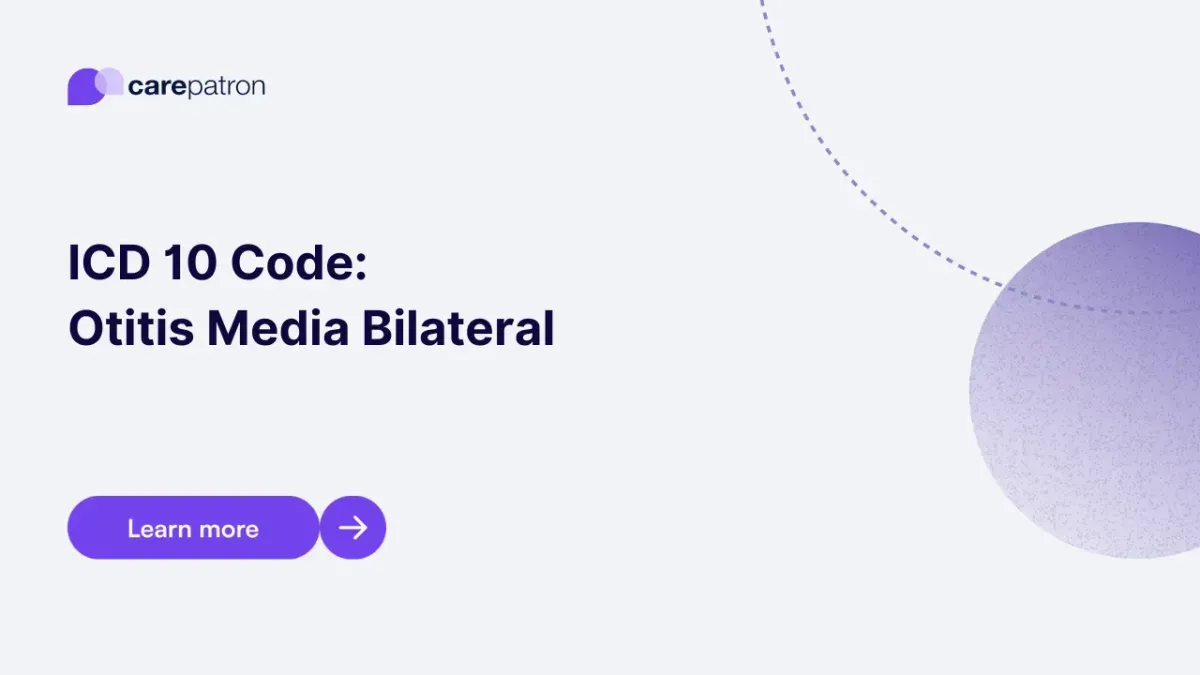
Otitis Media Bilateral ICD-10-CM Codes
Learn about ICD-10 codes for otitis media, symptoms, causes, treatments, and billing details.
Use Code
Commonly asked questions
Otitis media bilateral is commonly caused by viral or bacterial infections that spread to both middle ears, often following upper respiratory tract infections. Other contributing factors include environmental tobacco smoke, allergies, and Eustachian tube dysfunction.
Treatment depends on the cause and severity, but it often includes antibiotics for bacterial infections and pain relievers to manage symptoms. In chronic or recurrent cases, ear tubes or referral to an ENT specialist may be necessary.
Yes, if left untreated, otitis media bilateral can cause temporary or, in rare chronic cases, permanent hearing loss due to fluid buildup, middle ear damage, or a perforated tympanic membrane. Prompt diagnosis and management are key to preventing complications.
EHR and practice management software
Get started for free
*No credit card required
Free
$0/usd
Unlimited clients
Telehealth
1GB of storage
Client portal text
Automated billing and online payments
